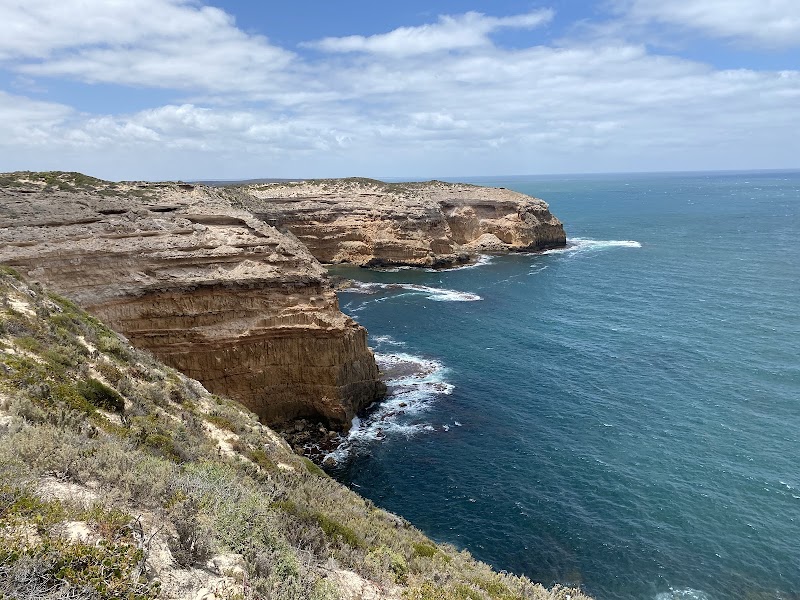
Adelaide Marathon: Navigating North Adelaide’s Urban Pulse and Scenic Challenge
The Adelaide Marathon pulses through North Adelaide each autumn, blending urban scenery with refreshing green corridors. Whether you're running or watching, this marathon offers a distinctive mix of challenge and community in South Australia’s bustling capital.
Stay Hydrated Throughout the Course
Aid stations appear every 3 to 5 kilometers, but carrying a lightweight hydration pack or belt can help you manage fluid intake on your terms, especially during warmer segments.
Choose Cushioned Road Shoes
The predominantly asphalt course can be unforgiving; opt for shoes with responsive cushioning to protect your joints and maintain comfort over 42 kilometers.
Train on Flat Terrain
Build endurance with long runs on flat asphalt or concrete to mimic race conditions and improve pace management, minimizing surprises on race day.
Dress in Breathable Layers
Start cool with layered clothing that can be shed as temperatures rise during the morning, helping regulate body heat efficiently throughout the race.
Adelaide Marathon: Navigating North Adelaide’s Urban Pulse and Scenic Challenge
Each autumn, North Adelaide transforms into the vivid stage for the Adelaide Marathon, a test of endurance that threads through the city’s structured streets and parks with surprising bursts of natural flair. Spanning the full 42.195 kilometers for the marathon with shorter options for the half and relay, the course balances urban grit and green reprieves with an elevation gain modest yet meaningful—around 150 meters. Runners feel the city extend its energy, with wide pavements and well-marked routes demanding steady pacing, while moments close to the River Torrens invite you to tune into the natural world daring you to match its flow.
This event is not just a race but an exploration of North Adelaide’s dual personality. The terrain is mostly flat, making it accessible for newcomers, but don’t mistake ease for complacency: the steady asphalt can push your legs and your focus. Expect a mix of road surfaces, including smooth city streets and paved park paths lining leafy reserves that crown the course with pockets of calm. The air often carries traces of eucalyptus and freshly cut grass, reminders that even in the city, nature holds soft territory.
Hydration is critical here; aid stations are spaced roughly every 3 to 5 kilometers, and if you’re aiming for your personal best, plan your intake carefully to avoid the notorious fatigue that creeps in past the 30K mark. Footwear choice leans pragmatic: responsive road shoes with good cushioning will absorb the repetitive impact. Sunrise starts on race day mean cooler temps that steadily climb, so layering light and breathable clothing is an advantage.
For anyone planning to catch this race in action or take part, timing your training to build consistent mileage on flat surfaces will prepare your body well for the steady but unrelenting character of the course. On-site volunteer support and urban facilities minimize logistic headaches, allowing focus to remain on the race itself.
The Adelaide Marathon in North Adelaide is fiercely itself—a race that respects the city’s pulse and the runner’s resolve equally. It invites participants and spectators to engage in a rhythm that is at once physical and communal. If you’re ready, the streets of North Adelaide await with measured challenge and welcoming cheers.
Nearby Trips
All Adventures
Boat Charters
Water Activities
Adventures near North Adelaide, South Australia
Discover the unique and memorable adventures that make North Adelaide, South Australia special.
Frequently Asked Questions
What is the elevation profile of the Adelaide Marathon course?
The course features gentle elevation gains totaling around 150 meters, mostly rolling hills that provide minor challenges without steep climbs, favoring steady pacing.
Are there aid stations along the marathon route?
Yes, aid stations appear approximately every 3 to 5 kilometers, offering water, electrolyte drinks, and first aid support to maintain hydration and energy levels.
Can spectators access good viewing points during the race?
North Adelaide’s parklands and river crossings offer excellent vantage points, particularly near the River Torrens and the Cathedral precinct, where multiple runner loops pass close.
Is the marathon suitable for first-time marathoners?
The flat terrain and well-supported route make it viable for first-timers, but adequate preparation and pacing strategies are essential to finish comfortably.
What wildlife might runners notice along the course?
While largely urban, runners often glimpse native birds like lorikeets, magpies, and occasionally playful possums in early hours or shaded park areas.
Are there environmental considerations tied to the race?
The event emphasizes minimal impact on local green spaces, encouraging waste disposal discipline and respecting park habitats, with volunteers helping keep the course clean.
Recommended Gear
Cushioned Road Running Shoes
Protects feet from repetitive impact on asphalt and provides comfort over long distances.
Lightweight Moisture-Wicking Apparel
Helps regulate temperature with layering options to adapt to changing morning and afternoon conditions.
Running Hydration Belt or Pack
Allows personalized hydration especially in warm, exposed sections of the course.
Running Cap and UV Protection
Protects from sun exposure during midday training and race day, reducing heat stress.
Local Insights
Hidden Gems
- "The River Torrens Linear Park stretch in North Adelaide offers a less frequented quiet spot with calm water reflections ideal for a moment of calm."
- "Victoria Park’s south entrance has quaint garden features overlooked by most marathon participants."
Wildlife
- "Rainbow lorikeets that chatter animatedly near flowering eucalypts."
- "Black swans gliding along the River Torrens' peaceful stretches."
History
"North Adelaide was laid out in the 19th century with wide streets and parklands that were part of Colonel William Light's city plan, giving the marathon a setting rich in planned urban heritage."
